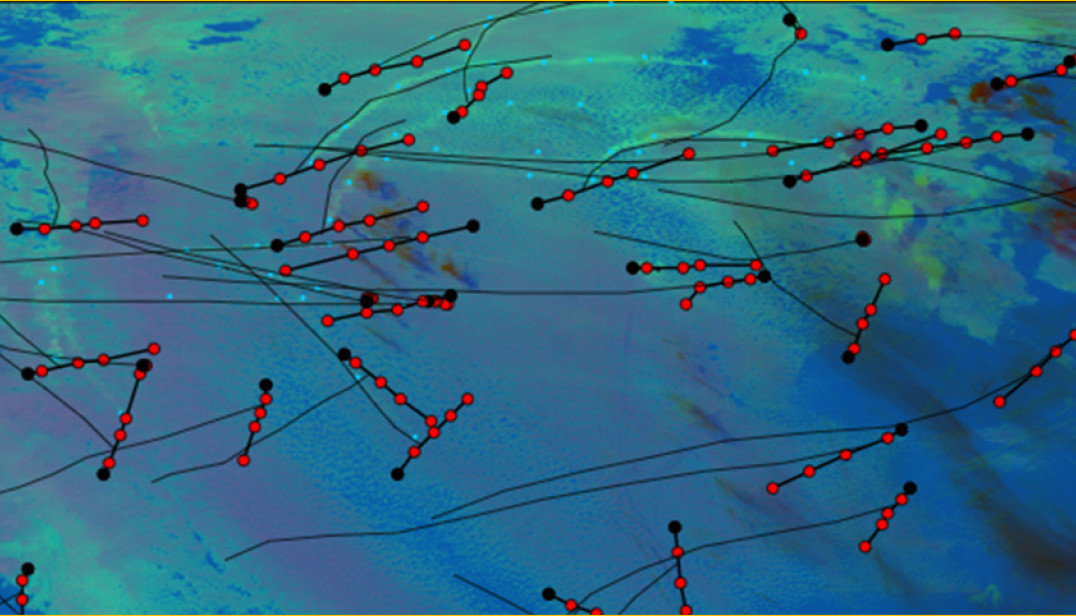The Physics of Clouds and Atmospheres
Our work focuses on understanding the physics of clouds, how they respond to their environment and their impact on the climate. We use a variety of different satellite datasets and a range of atmospheric models (from cloud to climate scales) as well as developing new observation systems and machine-learning techniques.
Recent highlights from our research group include:
Pollution in a warmer Arctic - While aerosols normally modify clouds to cool the climate in the Arctic, work by Rebecca Murray-Watson showed that this effect is significantly weakened as the climate warms. Not only does this highlight dangers from shipping pollution in a warmer Arctic, it demonstrates how pollution can change the response of clouds to warming (Further details)
Contrails, climate and COVID-19 - The shutdown in air traffic in response to the COVID pandemic provided a unique opportunity to assess the climate impact of aviation. Together with researchers in France and Germany, this work provided a new observational measure of the role of this hard-to-decarbonise sector (Further details)
Monitoring ships from space - By matching ship position information to satellite data, we measured the sensitivity of individual clouds to ship pollution. Not only does this provide a valuable insight into the behaviour of clouds and the magnitude of highly uncertain atmospheric processes, it also demonstrates a method to monitor ships and shipping pollution from space (Further details)
Shipping and aviation

Ships and aircraft provide a valuable insight into the response of clouds to human activity. Developing machine-learning based techniques to identify polluted clouds and aircraft in satellite imagery, we track these perturbations in time to 'experiment' on clouds.
In recent studies, we observed changes in the law affecting ship fuel, identified the response of clouds to undetected ships and measure the climate impact of contrails from individual aircraft (upcoming).

Matching ships to cloud changes in satellite imagery
Novel observation systems

Varying at small temporal and spatial scales, cloud processes are difficult to observe with current systems. At Imperial, we develop new observation systems and techniques compatible with these fast process rates in clouds.
Together with the University of Oxford, we are developing a multi-view system for reconstructing cloud properties and development. Using an array of consumer grade cameras, this system will combined computer vision and machine-learning techniques to reconstruct clouds fields at high resolution over multi-km regions.
Clouds and Climate (.com)

- Where is the cloudiest place on Earth?
- What kind of clouds to rockets produce?
- Is Lisa Simpson secretly a cloud physicst?
The answers to these questions (and more) can be found at www.cloudsandclimate.com

